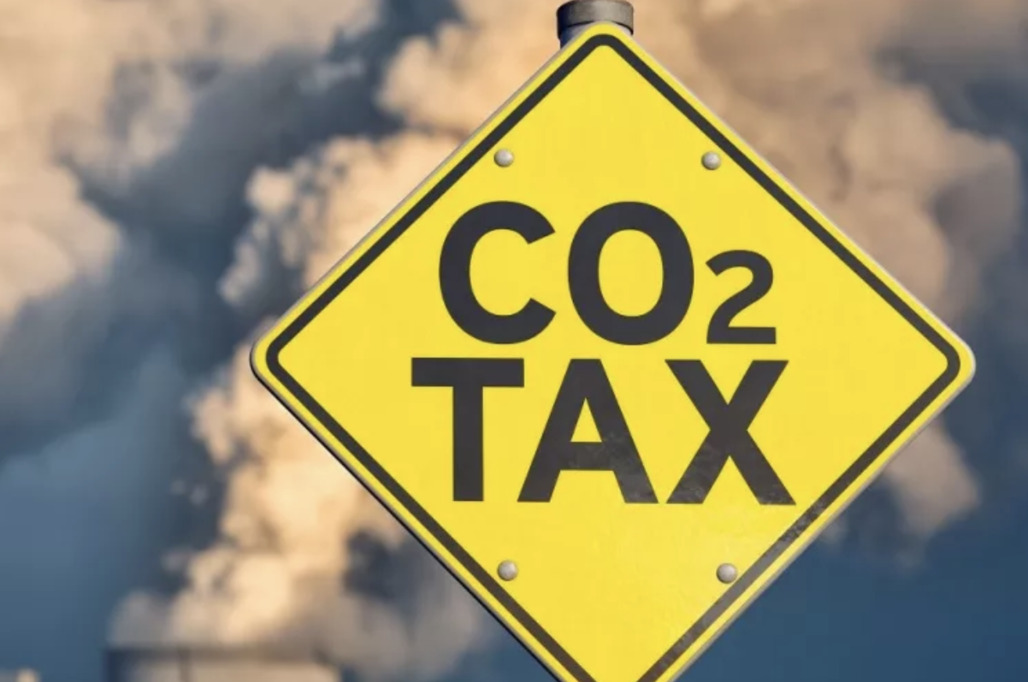This is how a carbon tax comes back
from Niskanen Center:
This is the final piece in a series about recently-enacted carbon pricing programs. The previous four essays cover Washington state, Canada, Austria, and Singapore.
Right now, carbon pricing appears to be dead in the halls of Congress. But, as this series has demonstrated, it is very much alive in other places. And if the political stars align again in Washington, D.C., those places may provide crucial lessons for federal lawmakers.
There are two looming threats for the country at large, and one for the GOP, that could propel carbon pricing back onto the federal agenda. First, with interest rates spiking, addressing the national debt is increasingly urgent. Federal lawmakers can do so by raising the debt ceiling, cutting spending, or increasing revenue. Republicans have long opposed raising the ceiling and have recently said they won’t push for cuts to Social Security and Medicare. That leaves a need for new revenue, which a carbon tax could raise.
Second, the European Union – which has had carbon pricing in place for 15 years – has developed a carbon border adjustment mechanism that it will start phasing in this year. American manufacturers wishing to sell products to EU countries will have to pay an import tax. Canada – our largest trading partner – already has a carbon tax and may emulate the EU in implementing a carbon border adjustment. Our most critical trading partners are getting a jump start in spurring innovation through a carbon price – the longer the U.S. waits to emulate them, the further behind we get. And the longer American policymakers sit on their hands, the more American manufacturers will have to pay at the border.
Finally, the GOP is facing increased pressure from young Republicans to take serious action on climate. If the party can’t find a way to respond to those up-and_coming voters, it will put itself at risk in future elections.
If these pressures lead to action, advocates and lawmakers can look to recent successful carbon pricing policies in Washington state, Canada, Austria, and Singapore for lessons on how to proceed. Now that we’ve had a chance to examine the routes these countries have taken, here are some key takeaways that can inform a future federal carbon pricing effort:
Republicans might like the revenue
Perhaps the most jarring thing to envision at this moment in political history is that Republicans could, at some point, support a new tax to tackle climate change. Taxes have for decades been anathema to Republicans, and climate change has only recently become utterable for elected Republicans. But Austria’s experience demonstrates that a) conservatives can indeed get behind a carbon tax if they like how the money is spent, and b) other tax cuts plus disproportionate benefits for rural dwellers could do the trick.
Washington state similarly indicates that while Republicans might be squeamish about voting for the price, they can be quite comfortable bringing and voting for bills to spend the revenue. A federal bill with a conservative-friendly spending plan that, for example, addresses the national debt, lowers other taxes, and sends more benefits to red places, while also emphasizing the uses of revenue rather than the mechanism for raising that revenue, could have a bipartisan chance in this hypothetical future.
Lean in to federalism
Another approach that could appeal to some conservatives is a federalist design, akin to Canada’s. By prioritizing states’ rights and leaving most decisions – from design to implementation to using the revenue – up to them, a future federal policy could skirt some fears that climate is just an excuse for federal power to infringe on states.
Find the factions that can cooperate
The business community is increasingly vocal in its support of carbon pricing, and was a key factor in both Washington and Singapore. Engaging the business community and activating elected officials who support American businesses could strengthen a coalition seeking a national carbon price.
Focus on solving important problems in addition to climate change
While climate change is a critical issue for many voters and lawmakers, it’s hardly their only priority. A policy negotiation that includes carbon pricing and aims to address concerns like crumbling infrastructure, a creaky safety net, and ballooning debt payments will go further than one that hammers on climate alone.
Could carbon pricing’s day really come?
The U.S. is missing out on the positive benefits other countries have accrued thanks to a carbon tax. But while other places have moved forward with this beneficial policy, American politics have moved further away from carbon pricing in the past decade. Three forces could drive a carbon price back onto the federal agenda in the future: 1) the need for revenue to address the national debt, 2) the desire to avoid paying fees to the European Union, and instead force fees on dirtier exporters, and 3) growing pressure from young Republican voters to take action on climate change. If those pressures all gain force at the same moment, a carbon price could go from pariah to savior.

